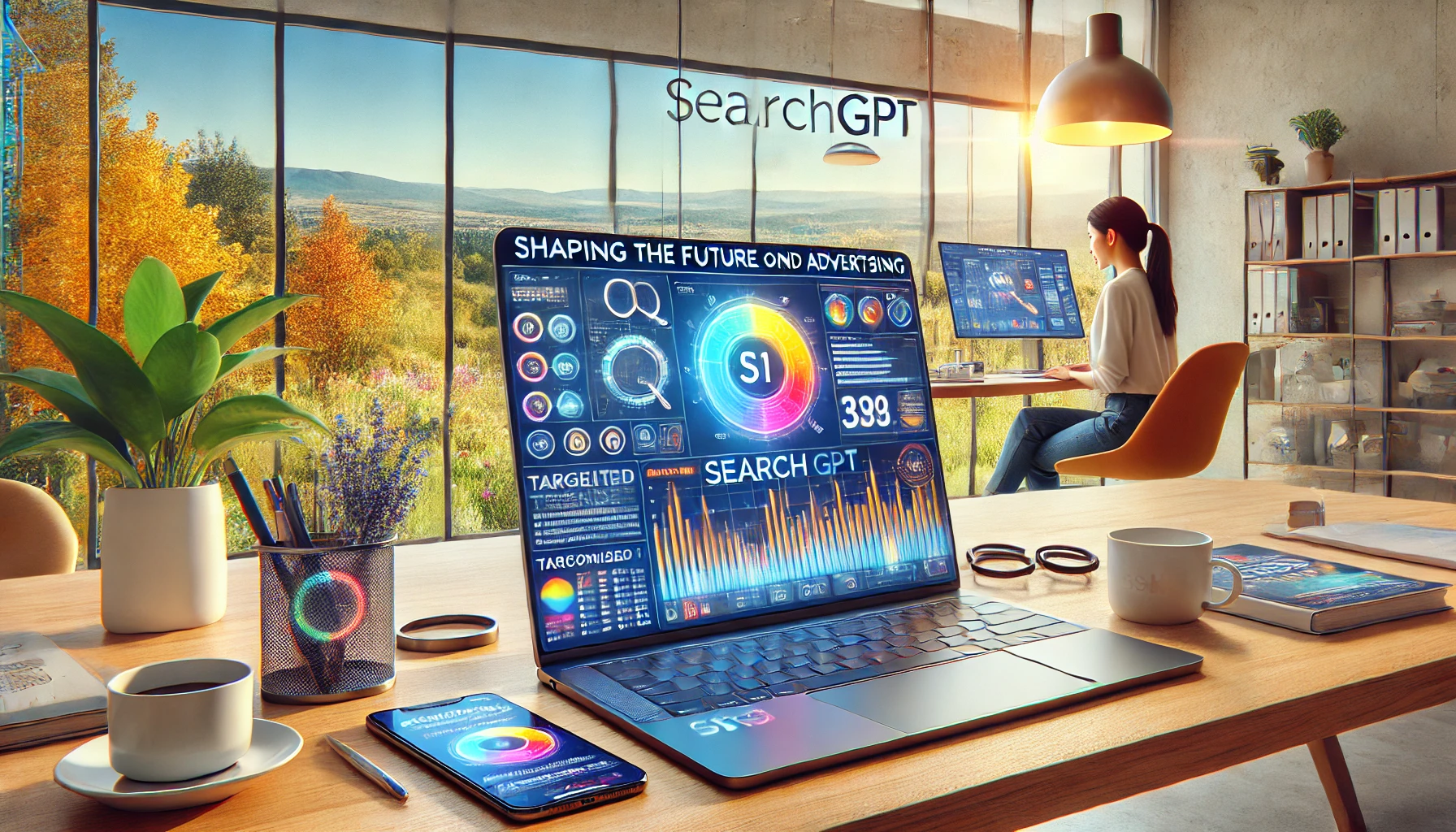How will OpenAI change search advertising?
This question looms large. OpenAI has already changed how people find and create content through the launch of ChatGPT, the popular AI-powered chatbot that uses natural language processing to generate human-like conversational responses. But ChatGPT does not do something very well that Google does: retrieving real-time information from the web.
Everything is changing, though. OpenAI recently said that by the end of 2024, it will launch SearchGPT. Designed to pull real-time information from the internet, SearchGPT will offer up-to-date answers and insights. This capability will allow SearchGPT to be more responsive to current queries and events compared to ChatGPT.
SearchGPT will join a growing list of search capabilities (such as Perplexity and Google AI Overviews) that use generative AI to provide more relevant and concise answers to search queries. And with OpenAI facing pressure to recoup mounting operational costs, you can bet your search budget that it’s only a matter of time before SearchGPT incorporates advertising. This is where things could get really interesting for the entire search advertising industry.
Rethinking Search with SearchGPT
SearchGPT moves away from the traditional list-based search model, focusing on natural conversations. Rather than making users scroll through multiple links, it provides answers directly while citing sources, ensuring transparency. Publishers are attributed within the results, driving traffic to their sites. Yet, this raises a familiar question: Will traffic alone suffice, or will publishers seek more tangible revenue-sharing models to justify their participation?
While SearchGPT’s conversational model adds value for users, it also faces challenges. Ensuring the accuracy of responses, avoiding bias, and protecting user privacy will be key as the platform grows. As with other AI-driven search tools, these issues will need constant monitoring to build trust among users and advertisers alike.
How SearchGPT Could Incorporate Ads
Though SearchGPT has not yet introduced paid advertising, OpenAI has suggested that ads could become part of the platform in the future. The potential for conversational ads embedded directly into the dialogue reflects a shift away from traditional banners and sponsored links. If executed well, these ads could feel like a natural part of the user’s interaction, aligning with the flow of the conversation without disrupting the experience.
Intent-Driven Targeting
SearchGPT’s ability to understand user intent could allow for highly targeted advertising that aligns with different stages of the consumer journey. Whether users are browsing, comparing products, or ready to make a purchase, SearchGPT’s AI could present relevant ads that meet them at the right moment. This intent-driven targeting has the potential to enhance ad performance by delivering ads that feel timely and useful, improving engagement and conversion rates.
Multimedia Ad Formats
One of the advantages SearchGPT offers is its support for multimodal content, including images, videos, and interactive elements. These rich media formats enable advertisers to create more immersive ad experiences that go beyond text-based links. For example, a product search could seamlessly incorporate a video demonstration or interactive tool within the conversation, drawing users further into the brand’s world.
As a new entrant in the search advertising space, SearchGPT presents opportunities for advertisers seeking to explore less crowded ad inventory. With fewer competitors vying for attention, early adopters may find lower costs and better visibility compared to established platforms like Google. Small businesses, in particular, could benefit from this window of opportunity before the platform becomes saturated with ads.
Implications for Google
SearchGPT’s arrival is well-timed for OpenAI, as Google faces mounting challenges to its dominance in search advertising. Amazon and TikTok have begun to carve out pieces of the search advertising market, drawing attention from advertisers who are eager for alternatives. TikTok’s recent introduction of search-based ads appeals to younger audiences, while Perplexity AI is developing ad-supported conversational tools with sponsored follow-up questions.
Meanwhile, Google’s share of the U.S. search ad market is expected to drop below 50% for the first time in over a decade. The company has responded by embedding ads within its AI-generated summaries, but its antitrust challenges further complicate its efforts to maintain dominance. With these pressures mounting, Google must now compete not only with established rivals but with emerging AI-powered search tools like SearchGPT.
A Changing Playing Field for Advertisers
As SearchGPT integrates into ChatGPT and the broader market, advertisers will need to adapt to these evolving search experiences. The ability to engage users through natural conversations offers new ways to connect. But the competitive landscape is shifting rapidly. With TikTok, Perplexity, and Google all advancing AI-based ad models, brands will need to explore multiple platforms to find where their messaging resonates most effectively.
For Google, this shift signals the need for faster innovation and careful strategic choices. While it remains a dominant player, its ability to maintain leadership will depend on how well it adapts to this new reality. Meanwhile, SearchGPT’s growth offers advertisers a new avenue to experiment with AI-driven targeting and conversational ads, though the ultimate impact will depend on how quickly the platform matures.
A New Era of Search Takes Shape
The rise of conversational search engines like SearchGPT marks a turning point in how people interact with digital content. Whether or not SearchGPT ultimately incorporates ads, its entry into the market underscores the growing importance of natural, AI-driven search experiences. As competition heats up and consumer expectations evolve, the search landscape will continue to fragment, offering new opportunities for advertisers and forcing incumbents like Google to rethink their strategies.
For now, SearchGPT joins a movement already reshaping search and advertising. Whether it will become a leader or one of many alternatives remains to be seen, but one thing is certain—advertisers, publishers, and platforms alike must be ready to adapt to the fast-changing world of AI search.
Contact True Interactive
True Interactive can help you navigate the changing world of search advertising. Learn about our capabilities on our website.
